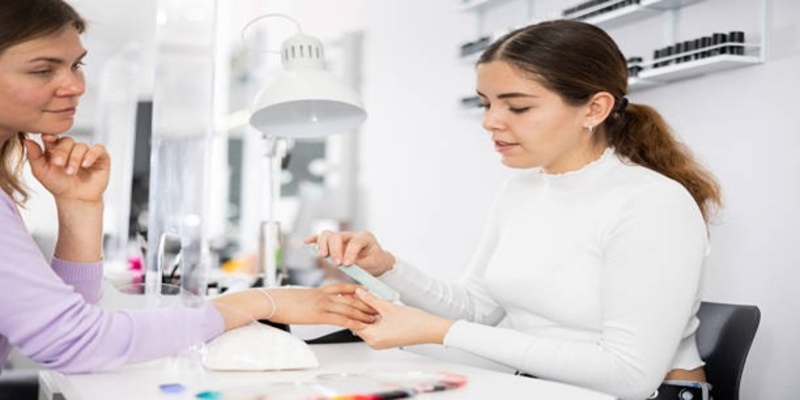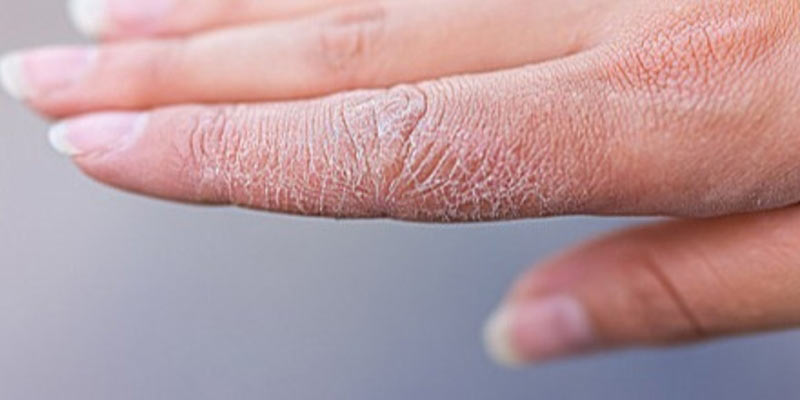Hangnails, those tiny, pesky pieces of torn skin that appear around the edges of your nails, might seem like minor nuisances. However, if left untreated, they can lead to discomfort, pain, and even infection. In our busy lives, it's easy to overlook the care our hands and nails require, often leading to the emergence of hangnails due to dryness, exposure to harsh chemicals, or simple neglect. This step-by-step guide aims to offer you a comprehensive and safe approach to treating hangnails, ensuring your hands remain as healthy and well-cared for as the rest of your body. We'll walk you through identifying a hangnail, proper sterilization methods, safe removal techniques, and aftercare procedures that will promote healing and prevent future occurrences.
Identifying a Hangnail:

To correctly identify a hangnail, look for tiny pieces of skin that have separated from the cuticle or the side of the nail. These often appear as thin slivers of skin, slightly lifted, creating a fringe-like appearance around the nail. Not to be confused with a cut or a torn cuticle, hangnails are mostly attributed to the skin's dryness around the nails. Paying close attention to these signs is crucial for early detection and treatment, preventing the potential for infection. It's essential to distinguish them from other nail issues, as treating a hangnail requires a specific set of steps to safely remove and heal the area without causing further damage to the skin.
Sterilization of Tools and Hands:
Before proceeding with the removal of a hangnail, ensuring that both your hands and the tools you'll be using are thoroughly sterilized is crucial. Start by washing your hands with warm water and antibacterial soap to eliminate any bacteria. After drying, use rubbing alcohol or a disinfectant on both your hands and the toolssuch as tweezers and nail scissorsto avert the risk of infection. This step is fundamental; neglecting to sterilize can introduce germs into the open skin, leading to severe infections. Paying meticulous attention to cleanliness during this process safeguards your hands and expedites the healing of the treated area.
Softening the Hangnail:
To soften the hangnail and prepare it for safe removal, soaking the affected finger in warm, soapy water is highly effective. Aim for a soaking time of approximately 10 minutes, which will not only soften the hangnail but also hydrate the surrounding skin, making the removal process less painful and minimizing the risk of causing further damage. If desired, adding a few drops of essential oils, such as lavender or tea tree oil, can provide additional antibacterial benefits and promote relaxation during the soak. This step is crucial for easing the removal process and preventing the hangnail from tearing further into the skin, which could lead to infection or increased irritation. Always ensure the water is comfortably warm and not too hot, to avoid scalding the skin.
Safe Removal:
After the hangnail has been properly softened, gently pat the area dry with a clean towel. Then, using your sterilized tools, carefully trim the hangnail without pulling or tearing at the skin. If using tweezers, grasp the hangnail at its base and snip it at the root to prevent further splitting. If choosing scissors, cut as close to the base of the hangnail as possible, taking care not to cut the surrounding skin. Its imperative to avoid ripping or tearing the hangnail away, as this can create open wounds prone to infection. Perform this step with patience and precision to ensure a clean removal, minimizing damage to the skin.
Applying Antiseptic:
Immediately after the hangnail has been safely removed, it's vital to treat the area with an antiseptic. This will cleanse the area, eliminating any remaining bacteria, and significantly reduce the risk of infection. A gentle antiseptic solution or cream should be applied directly to the site of removal. For individuals with sensitive skin, selecting an antiseptic product that is free from alcohol or any harsh chemicals is advisable to avoid irritation.
Following application, allow the antiseptic to dry completely before proceeding to cover the area with a sterile bandage. This not only protects the skin from external irritants but also keeps the healing area clean. Changing the bandage daily or whenever it becomes wet or dirty is crucial to maintain cleanliness until the skin fully heals. Adhering to these steps ensures effective healing and prevents complications, safeguarding the health of your nails and surrounding skin.
Moisturizing and Protecting the Area:
Once the hangnail is removed and the area is treated with an antiseptic, the next crucial step is to moisturize and protect the area to promote healing and prevent future hangnails. Apply a rich hand cream or a cuticle oil specifically formulated to hydrate and nourish the skin around the nails. Products containing ingredients such as vitamin E, jojoba oil, or shea butter are highly effective for maintaining the skin's moisture barrier. Regular moisturization keeps the skin supple, reducing the likelihood of dryness and subsequent hangnails. Additionally, wearing gloves while performing chores or exposing hands to harsh chemicals can offer further protection, preserving the health of your nails and surrounding skin.
Prevention and Maintenance:

Now that the hangnail has been safely removed and the area is healing, it's essential to take preventive measures to avoid future occurrences. Keeping your hands adequately moisturized and avoiding exposure to harsh chemicals can significantly reduce the risk of developing dry skin and subsequent hangnails. Regularly trimming and maintaining your cuticles can also prevent hangnails from forming in the first place.it's advisable to inform your nail technician about any current or previous hangnails and request that they avoid cutting or pushing back the cuticles too aggressively. Proper nail care is crucial for preventing hangnails and maintaining healthy nails and surrounding skin. By following these steps, you can effectively treat and prevent hangnails,
Conclusion:
Hangnails may seem like a minor issue, but they can lead to severe infections and cause significant discomfort. Proper removal techniques, such as sterilizing tools and hands, softening the hangnail before removal, applying antiseptic, moisturizing, and taking preventive measures can ensure safe removal and promote healing. By paying attention to nail care and following these steps, you can prevent hangnails and maintain healthy nails and surrounding skin. Remember to always prioritize safety and cleanliness when dealing with any nail issues. If complications arise, it's essential to seek professional medical attention for proper treatment.







